The Larco Museum, Lima, Peru
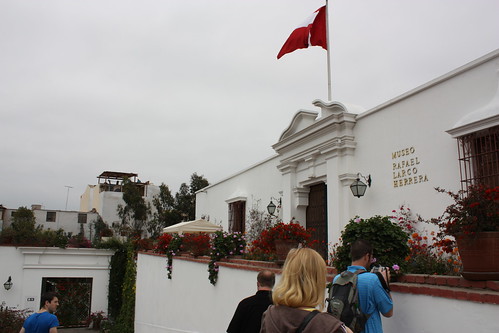 –
–
My husband occasionally has moments of brilliance. He has moments of utmost stupidity, too, but since I love him more than Seattle on a sunny day (a rare phenomenon that I can see outside my office window as I type this) I’d like to focus on the brilliance.
At the end of our trip to Peru, we were talking about our experiences in the country. I noted that Peru was much cheaper than Italy, yet seemed to be just as culturally rich. Even though we got ripped off a few times, it wasn’t nearly to the degree that we might have in Rome or Naples. It was far less costly to see Peru.
Rand nodded. And unleashed his occasional brilliance.
“Italy is the pretty girl who knows she pretty, and will make you pay for it. Peru is the pretty girl who has no idea that she’s beautiful.”
Boom. Brilliant.
And nothing we saw in Lima exemplified this more than the Larco Museum (or the Museo Larco, as it is known locally). Though we spent a good chunk of time online researching things to do in Peru’s capital, we found little information on the museum. Even the gals who worked there looked shocked when we walked through the door. One stared blankly at us – a group of pasty Americans, before asking, “How did you hear about us?”
I told her we had read about the museum online and that it came highly recommended from those who had visited it. She looked shocked.
Like the pretty girl who was just told that she’s stunning. And she had no idea.
The Larco Museum is privately owned. Having visited the Barnes in Pennsylvania, I know that this can usually make for fantastic (if unconventional) collections. This is true of the Larco, which isn’t particularly big, but is nevertheless home to the largest collection of pre-Columbian artifacts anywhere in the world. If you associate Ancient Peru with just the Incans, you are merely scratching the surface of the country’s history. There are pieces from the Moche, Nazca, Chimu, and Inca peoples. What’s that? You’ve not even heard of most of those groups? Well, that’s not really surprising. They had a habit of conquering and subsuming one another. The Incas were perhaps the most prominent group up until 1532, when the Spanish arrived.
–
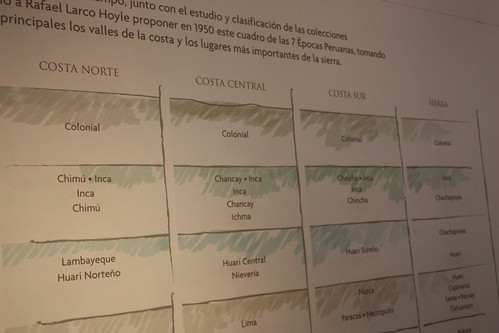
Notice how, in 1532, the reigning group over all territories became "Colonial."
–
The impact of Colonialism seems (at least, in my opinion) to have left a lasting mark on the psyche of Peru. One of our tour guides – a native to a small village near Cuzco – told us that he had recently given a tour to a group of Spaniards that didn’t go particularly well. Whenever they asked him questions about native peoples, he always added at the end, “But then you guys showed up, and killed and raped everyone.”
I can see how that might make things a weensy bit awkward, no?
And while I don’t think that we can hold present-day members of an ethnic group accountable for what their forefathers did (I’m Italian, Russian, and Catholic. I’d have a lot to atone for), it’s hard not to feel anger on behalf on the native peoples. Their temples were torn down and desecrated, their homes destroyed, their children enslaved. Their culture was so devalued, that even today, when you enter a museum dedicated to it, the employees who working there look shocked that anyone would be interested.
“You … want to learn about what was here before the Conquistadors arrived?” they seemed to ask, wide-eyed. And we did.
We learned that in Ancient Peru, a few recurring symbols were used again and again. A condor represented the sky, a cat (or jaguar) represented the earth, and a snake represented the world underneath the soil. Used together, these three icons represented the world.
–

Pitcher at left representing the cat/condor/snake trifecta. Look closely and see if you can spot all three.
–

Rand peers at some pottery.
–
We saw plenty of gold and silver – the former representing the sun (which, I am pleased to say, is still shining out my office window. Really, Seattle, WHAT ON EARTH IS GOING ON?), the latter representing the moon. While gold may be considered much more precious by today’s standards, in Ancient Peru they were valued equally.
–
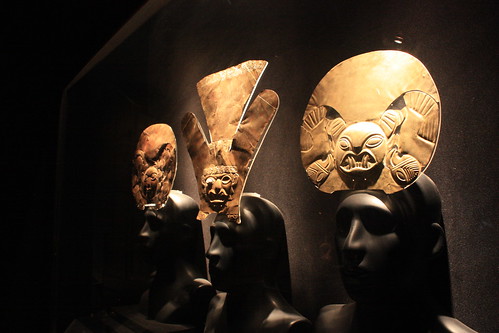
I know just the outfit that I would wear with this.
–

Seriously, I'm beginning to think I don't own enough jewelry.
–
The exhibits we saw weren’t terribly big – we covered that portion of the museum rather quickly, but there was still plenty left to see. The Larco is one of only a handful of museums worldwide that lets you browse their storage area (most museums only ever display about 20% of their collections at a time). We walked through large rooms lined with artifacts up to the ceiling.
–

Megan checks out the storage area.
–
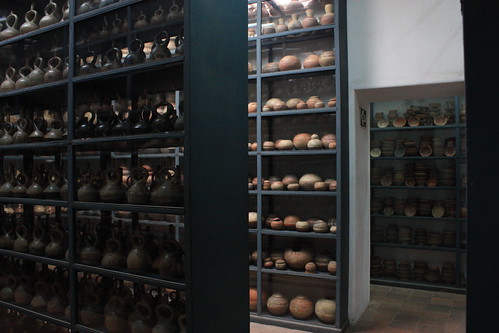
There's a joke here. Something about the REAL Pottery Barn. I'll work on it.
–
 –
–
We didn’t have much context for many of the items in this part of the museum (after all, they weren’t officially on display) but it was nevertheless mesmerizing. We were kids in an archaeological candy store.
–
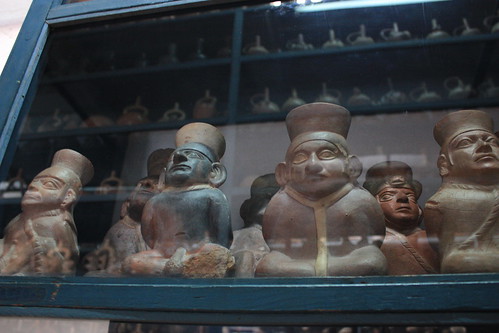
After the Conquistadors arrived, the Incans depicted many of their gods in chains to symbolize the ravages of Colonialism.
–
I kept expecting to see the Ark of the Covenant nestled in some corner Sadly, I did not, but I did see this guy, who was almost as cool:
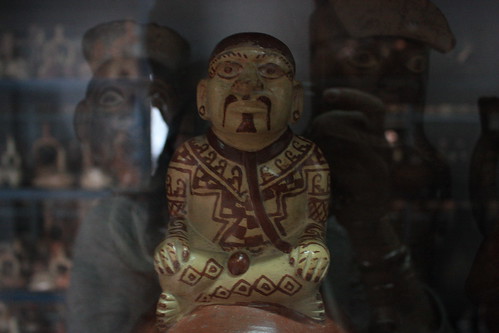
In this instance, they've actually created a Conquistador (noted by the facial hair) in a submission position.
–
But perhaps the most entertaining part of the Larco is the section of erotic pottery.
Yes, you read that right. EROTIC POTTERY: now no longer just a class at a community college in San Francisco! It was a real, permanent exhibit in the museum. And, all jokes aside, it was rather … extensive (hee).
Keep in mind, the following photos are solely of pottery – but for those of you who live or work in puritanical or conservative environments, you might want to skip the rest of this post. It features a lot of terra cotta genitalia.
Okay …
Don’t say I didn’t warn you …
Here we go …
–
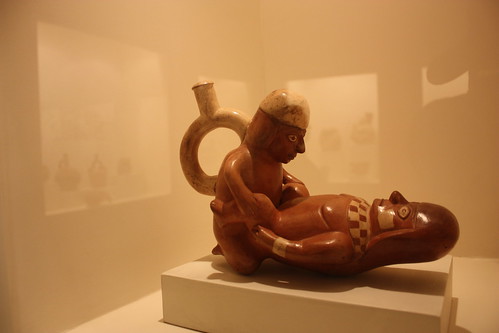
Someone add this to my Amazon wish list (GET IT? AMAZON?)
–
SHAZAAM! That’s the money shot. Or money pot, as it were.
I have to say – I’m actually quite proud of us. We held it together pretty well, despite reading informative signs (in both Spanish and English) that said things like, Water pot depicting couple in missionary position, or Fruit bowl featuring couple partaking in anal sex.
I imagine Ancient Incan dinner parties must have been a total trip.
“Sweetie, can you please get the nice pitcher out for me?”
“Which one do you want? The one with the tiny dude wielding a penis as large as he is, or the one with the woman reluctantly performing fellatio on her husband?”
“Honey, PLEASE. My parents are coming over! … The one with the woman performing reluctant fellatio. OBVIOUSLY.”
–
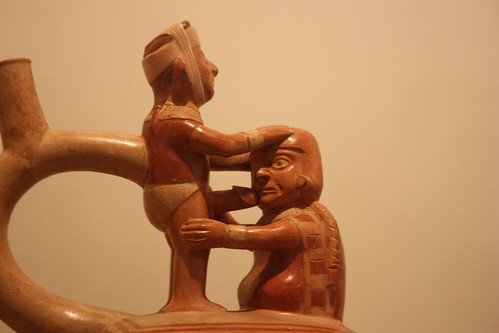
I bet you thought I was kidding before, huh?
–
I suspect part of the reason we were able to behave so well was that we were in the company of a tour group of folks who were old enough to be my parents, and they were saying things that were positively raunchy. They were misbehaving for us – making cracks like, “Goodness, she doesn’t seem to be enjoying that at all,” and “We need to try that one at home.”
–
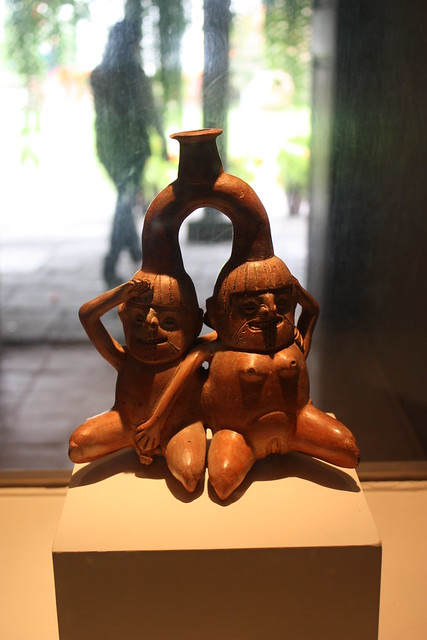
I like this one, because everyone involved looks so darn happy.
–
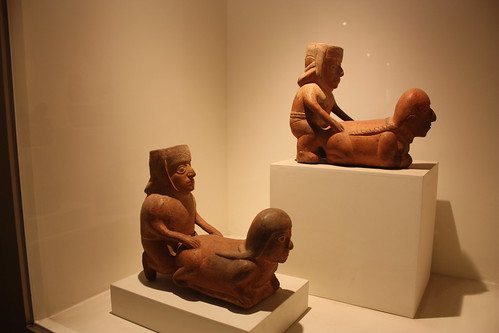
Keeping up with the Joneses.
–
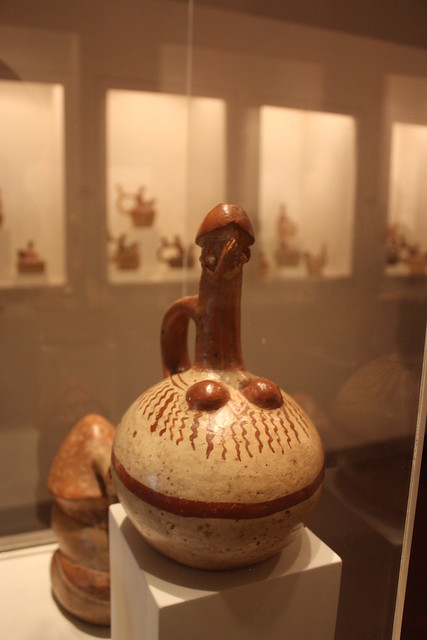
Looking for the perfect Christmas present for your boss? Look no further.
–
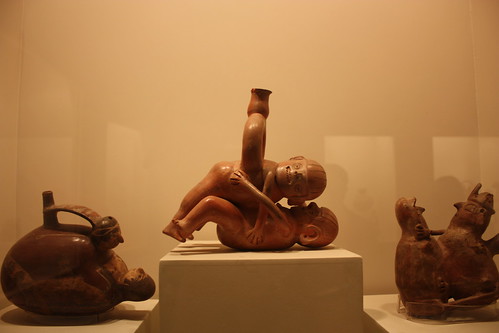
Nothing to see here, folks. Just move along.
–
The comments coming from the tour group were positively dirty. It was delightful. In a perfect world, I would get to hang out with those folks every day.
Having had our fill of erotic pottery (I know – I, too, was surprised such a thing was possible), we enjoyed the gardens of the museum before heading out.
–
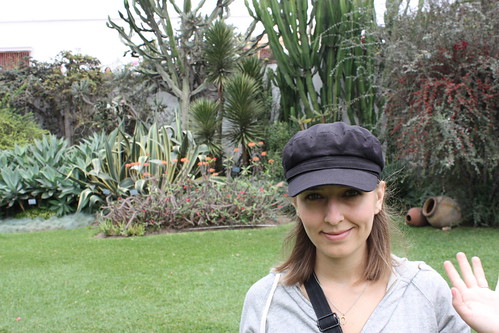
The hubby took this of me, and I think it's kind of cute. Like I said before - moments of occasional brilliance.
–
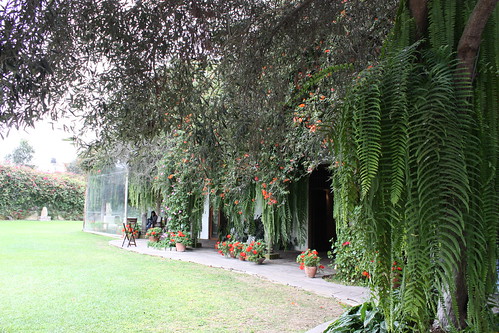
This photo, like so many things we had seen that day, is overexposed.
–
We’d spent the better part of an afternoon at the museum, seen priceless treasures, and stifled some serious giggles. The total price of admission? Roughly $12 U.S.
In Italy – or even in the states – we’d have paid twice that.
Rand really was right – Peru is the pretty girl who has no idea she’s pretty. Once you get to know her better, you’ll find that in addition to her loveliness, she’s truly entertaining and a lot of fun.
–
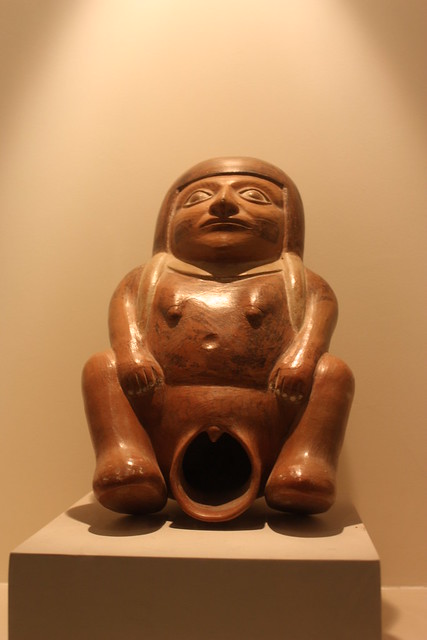
Yowza.
–
And she has one heck of a naughty side, to boot.
—————
The Essentials on the Larco Museum, Lima, Peru
- The Verdict: YES. Admission is only about $12 U.S., and the Larco has a collection which is literally unlike anything you will see anywhere in the world. If you are in Lima, it’s a must-visit.
- How to Get There: We cabbed it over. Check out my post on how to haggle for taxi cab rates in Peru if you want to go this route. And when you are leaving the museum, be sure to wander a few blocks away before hailing a cab: the ones waiting outside the Larco will try charging you much more.
- Ideal for: Anyone who loves archaeology or ancient cultures, or who’s interested in learning more about the pre-Colombian groups in Peru.
- Insider Tips: Give yourself at least an hour to visit the museum. Don’t forget to take a look at the erotic pottery section, the gardens, and the storage area. The gift shop was also quite reasonably priced compared to the ones you’d find in the U.S. or Europe. And keep an eye out for the Peruvian National Hairless Dog, which usually stands guard near the museum’s entrance.
- Nearby Food: The cafe at the museum is supposedly pretty decent, but we didn’t go there. Instead, we found ourselves at the Antigua Taberna Queirolo. It was a little hectic and our server spoke no English, but we got along fine (you will be okay – people are friendly in Peru, and the menu has photos).
- Good for kids: Children with some knowledge of the pre-Colombian civilizations of Peru would probably get a kick out of this (I was in fourth grade when we first started learning about South America), though there’s a risk that younger ones might get bored. Everything is behind glass, so there’s little that even the smallest guests can damage, and they can run around the gardens, too. Plus, a good section of the place is stroller-friendly.









Leave a Comment